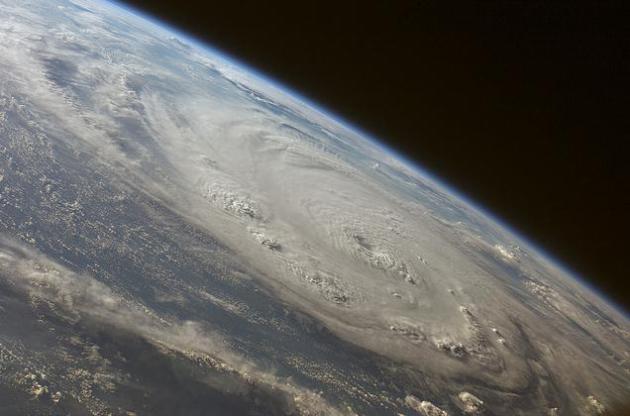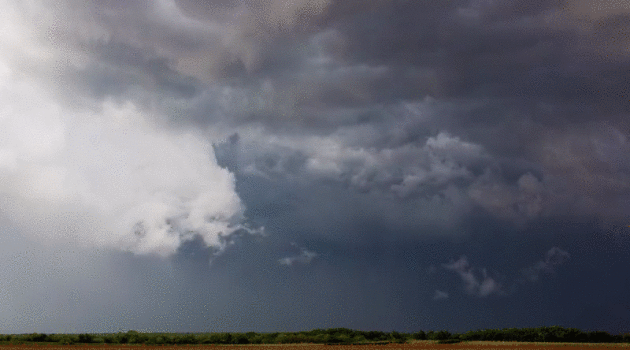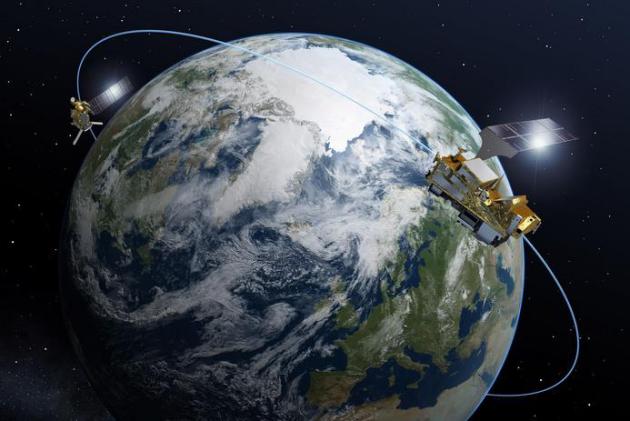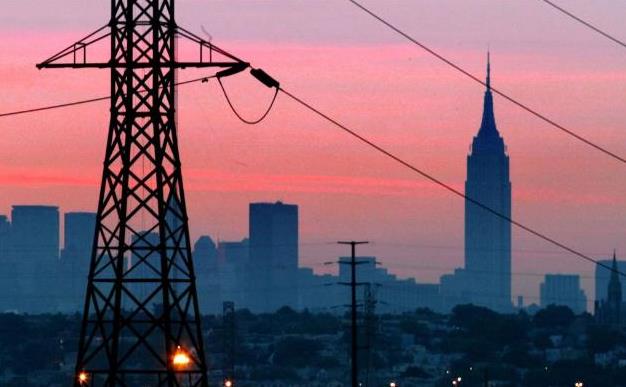78 F. high temperature at KSTC Saturday.
83 F. average high on July 16.
73 F. high on July 16, 2015.
July 16, 1952: 5.20 inches of rain falls in 3 1/2 hours at Moose Lake. Numerous basements flood, and Highway 61 becomes impassable at Willow River.
July 16, 1934: Frost damages crops across the north with lows of 34 in Baudette and Roseau.
Heat Spike Brewing - But Nothing Like 1936
It's going to get (stinking) hot, but perspective is called for. What we're facing won't be nearly as severe as July 1936, when Twin Cities high temperatures topped 100 degrees five days in a row; as hot as 108F in the metro area. The 1930s brought crazy heat, but it was localized to the Plains and Upper Midwest.
What has changed since then is dew points: they're trending higher, meaning more summer humidity; more juice for flooding thunderstorms and dangerous heat indices, which factor temperature and humidity.
For the record I'm pro-corn, but research suggests irrigated fields of corn "sweat" at night. This "evapo-transpiration" adds additional water to the air, resulting in days when dew points are higher in southern Minnesota than along the Gulf Coast.
So yes, advances in farming may be adding a few degrees to the heat index during summer heat spikes across the Midwest.
By Wednesday & Thursday it may feel like 105-110F, but a northwest breeze provides slight relief on Friday.
Even so maps look hotter than normal into early August. Not run for the hills, 1936-hot, but hot enough for most.
July climate data above courtesy of the Minnesota DNR and State Climatology Office.
Corn and Climate: A Sweaty Topic. More on corn, evapotranspiration, rising dew points and the siting of weather instruments in a 2011 post at UCAR: "...Stephen Corfidi, a forecaster with the NOAA Storm Prediction Center, has been keeping an eye on Midwestern moisture trends for decades. “Subjectively, from analyzing surface data over my career, I would say with near certainty that surface dew points have increased in the upper-mid Mississippi and lower Ohio Valleys over the last 30 years,” Corfidi told me by e-mail. “In particular, it seems as though broad swaths (say, 300- to 50-mile–wide corridors) with surface dew points averaging in the mid 70s Fahrenheit are no longer uncommon.” NCAR’s Peggy LeMone was inspired by a chat with Corfidi to look further into the issue. As she explains in a 2007 blog post, corn is being grown in ever-more-dense fields, and this could be helping to boost dewpoints. However, the exact role of intensified cropping is difficult to isolate. Corn-based agriculture is shifting in a variety of ways, including the use of longer-season cultivars and earlier planting, as recently noted by scientists from NCAR and the University of Wisconsin–Madison..." (photo credit: Star Tribune).
CDC found that over 650 people die per year from exposure to extreme heat (most of any weather threat). These deaths are preventable. Heat is considered a silent killer. It doesn’t come in toppling down trees or damaging homes, and often people don’t even know that they are suffering from heat illness.Dr. Hawkins is spot on. I cringe when I hear a death from heat and football called an “accident...”
Image credit: "This summer's floods in China are the fifth most expensive weather-related natural disaster outside of the U.S. in recorded history, according to the International Disaster database, EM-DAT."
This Week's Northland Flood Biggest Since 2012. So says the Minnesota DNR and State Climatology Office; here's an excerpt: "The largest flash flood since the June 19-20, 2012 event in northeast Minnesota struck some of the same areas on July 11-12, 2016. This time Pine County was hit especially hard. The highest two-day total found so far with this event was 9.34 inches at a DNR rain gauge volunteer site near Cloverton in eastern Pine County, near the Wisconsin border. The event was approximately 24 hours in duration, but spanned over the observer's observation time. Flooding rains also affected parts of Morrison, Aitkin, Cass, Crow Wing, Benton, Mille Lacs, Kanabec and Carlton Counties. Numerous roads were affected by water in the hardest hit counties. Southbound I-35 was closed for a time and Highway 61 was closed during the afternoon hours of the 12th. The area covered by six inches or more of rainfall exceeded 2,000 square miles, with at least 1,000 square miles in Pine County alone...."


Where Are The Hurricanes?
No shortage of record typhoons in the western Pacific, but it's been
supernaturally quiet in the Atlantic for over a decade, in spite of
warming water. Here's a clip from a New York Times story: "The
United States coastline has been calm so far this hurricane season,
just as it has been over the last decade. Since 2005, the year of Hurricanes Katrina, Rita and Wilma, the country has been in a hurricane “drought,” with no major hurricane (Category 3 or above, meaning winds above 110 miles per hour)
making landfall. The nation’s most hurricane-prone regions, the
Southeast and Gulf Coasts, have been eerily quiet. Even so, climate
scientists like me believe that human-induced climate change
will strengthen hurricanes and lead to worse disasters. We know that
significant global warming, over a degree and a half Fahrenheit, has
already occurred since preindustrial days. So where, you might ask, are
the powerful hurricanes?..." (2007 Hurricane Felix file image: NASA).

Storm Chaser's Time-Lapse Video Is As Gorgeous As It Is Terrifying. I agree. Thanks to Mike Olbinski and Treehugger for passing this along: "Storms
chasers are a special breed of people. Upon a storm warning the natural
reaction for most of us might be, "ACK, take cover." Not for storms
chasers, it's more like, "Let's go get that thing!" Which seems to be
the exact attitude held by storm chaser (and wedding photographer!) Mike Olbinski who set out to capture some storms, and man did he ever..."
Video clip credit: Mike Olbinski/Vimeo
.jpg)
Why You Should Fear an "Ecological Recession". Because nature always bats last. Here's a snippet from TIME: "More than half of the world may be experiencing a dangerous loss in biodiversity. Human efforts to slow biodiversity loss are falling short across the globe, which could in turn harm future human development and wellbeing, according to new research. Researchers behind study, published in the journal Science, found that human-caused pressures like land use change—the
destruction of natural habitats often for timber, agriculture or
residential developments—have cause biodiversity to fall to
unsustainable levels more than half of the world’s surface..."
Here's How The World Could End - And What We Can Do About It. Science has a quick read that will make it a bit harder to fall asleep; here's an excerpt: "...Some researchers fear that another Carrington-like event could destroy tens to hundreds of transformers, plunging vast portions of entire continents into the dark for weeks or months—perhaps even years, Murtagh says. That’s because the custom-built, house-sized replacement transformers can’t be bought off the shelf. Transformer manufacturers maintain that such fears are overblown and that most equipment would survive. But Thomas Overbye, an electrical engineer at the University of Illinois, Urbana-Champaign, says nobody knows for sure. “We don’t have a lot of data associated with large storms because they are very rare,” he says. What’s clear is that widespread blackouts could be catastrophic, especially in countries that depend on highly developed electrical grids. “We’ve done a marvelous job creating a great vulnerability to this threat,” Murtagh says. Information technologies, fuel pipelines, water pumps, ATMs, everything with a plug would be rendered useless. “That’s going to affect our ability to govern the country,” Murtagh says..."
Photo credit: "Electrical surges due to a solar storm shocked telegraph operators in 1859; today, they could wreak havoc on power grids and electronics." NASA/Martin Stojanovski.

Why Did American Cats Get Blamed For So Many Divorces? I had no idea, but here comes Atlas Obscura to make sense of the senseless: "...The
relative newness of cats as pets was a fulcrum for these early divorce
cases. Household pets were not assumed the respect they might be given
today, which put couples at odds when one of them was more partial to
cats. Another 1912 divorce report from the The Los Angeles Herald,
a veritable record of cat and divorce news, concerned a 74-year-old
Civil War veteran who could not handle his wife’s 35 cats and two dogs,
in part because she “gave them more care than she gave him.” He seemed
traumatized: "In all my experience of four years as a soldier,” he said,
“I never had to contend with such conditions as those dogs and cats
created in our home....”
Image credit: "Too many cats has also been cited as a reason for divorce, although in that case there were certainly more than two." (Photo: Internet Archive/Public Domain).

The Future of Breaking News? We'll
still need cable news to help with analysis and perspective (or will
we?) but the past few nights I've glimpsed the future of live, global
news coverage with Periscope and Facebook Live. Extremely powerful
technology - with any luck shining a light on events with our
smartphones may illicit better behavior, knowing people are watching.
Wishful thinking?

Dog Days Coming. These guys won't even notice the heat next week. Where do I sign up? A very funny video clip courtesy of Barkhaus on Facebook. Yeah, I have those same sunglasses but they look better on him.
TODAY: AM showers and storms, PM sun. Winds: W 10-15. High: 84
SUNDAY NIGHT: Clearing and pleasant. Low: 64
MONDAY: Partly cloudy, fairly comfortable. Winds: NW 5-10. High: 82
TUESDAY: Intervals of sun, heating up. Winds: S 10-15. Heat Index: 95F. Wake-up: 65. High: 88
WEDNESDAY: Early thunder, then steamy sun. Winds: S 10-20. Heat Index: 95-100. Wake-up: 75. High: 91.
THURSDAY: Sunny and dangerously hot. Heat Index: 100-110F. Winds: SW 10-15. Wake-up: 77. High: 97
FRIDAY: Sunny, breezy, slight relief. Winds: NW 10-15. Heat Index: 95-100F. Wake-up: 78. High: 90
SATURDAY: Still sticky, risk of a T-storm. Winds: S 8-13. Wake-up: 69. High: 90
MONDAY: Partly cloudy, fairly comfortable. Winds: NW 5-10. High: 82
TUESDAY: Intervals of sun, heating up. Winds: S 10-15. Heat Index: 95F. Wake-up: 65. High: 88
WEDNESDAY: Early thunder, then steamy sun. Winds: S 10-20. Heat Index: 95-100. Wake-up: 75. High: 91.
THURSDAY: Sunny and dangerously hot. Heat Index: 100-110F. Winds: SW 10-15. Wake-up: 77. High: 97
FRIDAY: Sunny, breezy, slight relief. Winds: NW 10-15. Heat Index: 95-100F. Wake-up: 78. High: 90
SATURDAY: Still sticky, risk of a T-storm. Winds: S 8-13. Wake-up: 69. High: 90
Climate Stories...

The World's Climate Pledges Are Not Even Close to Good Enough. Here's the intro to a story at Co.Exist: "In a little over a decade, if every country around the world keeps every current promise to cut carbon emissions, it's likely the planet will warm up 1.5 degrees Celsius. By 2100, the world's average temperature may have gone up as much as 3.1 degrees—with a risk of hitting 4 degrees, well into the range for global catastrophe. A recent study looked at the pledges made at the Paris climate talks in 2015, where countries agreed to keep warming below 2 degrees Celsius—and ideally below 1.5 degrees. The goal is what most scientists think is necessary to avoid the worst impacts of climate change. The problem is that the pledges each country has made so far will completely miss the target..."
Video: Las Vegas office of The National Weather Service.

Here Is What a Conservative Climate-Action Agenda Would Look Like. A carbon tax (let's call it a fee), eliminating all subsidies across the board, a market-friendly approach that reduces the need for government intervention over time? Here's an excerpt from Grist: "...The tax code is riddled with provisions that promote inefficiency and favor politically connected industries. Leading Republicans including House Speaker Paul Ryan and every presidential candidate in the last few cycles have argued for cleaning up and simplifying the tax code. One great way to do so would be to eliminate the various tax breaks for fossil fuel producers, particularly for oil and gas, which currently cost taxpayers several billion dollars per year. Republican politicians, of course, often favor these gifts because fossil fuels are popular among their base and are dominant in the economies of many red states. But principled conservatives should favor getting rid of them. (And if they want to make sure the government isn’t left favoring wind and solar, they could schedule fossil-fuel and clean-energy tax credits to phase out simultaneously.)..."

At Ground Zero for Rising Seas, TV Meteorologist Talks Climate. I have a lot of respect for John Morales in Miami, talking on the air about the ways a warming climate is already flavoring weather across south Florida. Here's an excerpt of an interview at Yale Environment 360: "...Ten years ago we had a big problem among broadcast meteorologists, who by greater than 50 percent seemed to be in the skeptic camp of anthropogenic global warming, according to some surveys. They either weren't communicating it, or they were finding ways to disparage the state of the science. Recognizing this, Bob Ryan, a former president of the American Meteorological Society (AMS), and myself, we co-authored an article in 2007 in the Bulletin of the American Meteorological Society saying that our profession is the face of science for the general public, that it is our responsibility to communicate the state of the science of climate change, that, in doing so, we need to divorce ourselves from political, religious, personal, and other views and just simply communicate the state of the science at the time..." (File image of Miami Beach: Trip Advisor).

Scientists Think They've Just Pinpointed the Key Driver of Ice Loss in Antarctica. Chelsea Harvey reports at The Washington Post: "The Antarctic Peninsula is headed for trouble — that much scientists know. Glaciers on the peninsula, which extends from the increasingly unstable West Antarctic region, have been retreating for decades, and some in the region have undergone particularly accelerated melting since the 1990s. Until recently, many scientists assumed that a steady increase in air temperature around the peninsula, the product of global warming, was the primary cause behind most of the ice loss. But new research looking at the western side of the peninsula suggests that this may not be the case after all. A study published Thursday in the journal Science suggests that warm ocean water may be the biggest driver of glacial retreat in that region — and it’s a problem that may not be getting enough attention..."
Photo credit: "An edge of the Thwaites Ice Shelf in Antarctica." ( Jim Yungel/NASA).
No comments:
Post a Comment